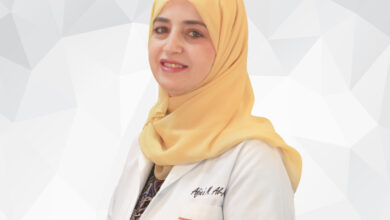Telemedicine to revolutionize outpatient based healthcare

Telemedicine or virtual healthcare is defined as the delivery of healthcare at a distance, typically embracing diagnosis, health education and research.
The healthcare sector is under pressure to reduce spending and increase efficiency. With the passage of time, the relationship between the physician and the patient has also changed, as more and more information is available at the click of the button and the patients have become more informed and can make better choices in their healthcare.
In the health sector, ICT is a cornerstone of efficient and effective services. In many countries, the use of ICT within the sector continues to grow, and the Internet in particular is driving notable change. For example, in middle- and high-income countries, the Internet is dramatically changing the way in which consumers interact with health services, including access to health information and the ability to purchase pharmaceuticals and other health products. The Internet also plays a key role in expanding the reach of health services to remote areas. The spread of broadband networks and the development of new e-health applications, defined as the use of ICT for health, have a mutually stimulating effect on further developments. (Ref: “Telehealth in the Developing world”, by Richard Wootton ET la).
Healthcare information technology has emerged as a promising development to transform the paper-based healthcare system into a digitized one.Quoting Forbes: “74% of patients stated that they would use a telemedicine service if available. This means the demand is there. Now it’s up to doctors, hospitals, and other healthcare providers to work on the supply side. According to a recent survey by the American Academy of Family Physicians, 78% believed the use of telemedicine improved both access to and quality of healthcare”.
The process of making a diagnosis or reaching a safe range of diagnosis depends upon three basic elements:
- History taking
- Medical Examination
- Review of Medical Records including Investigations
History taking: A very valuable part of the interaction is the medical history taking upon which an experienced clinician can reach include or exclude several medical conditions in the differential diagnosis. The process of taking medical history involves asking questions relating to the presenting complaint, events around it, relevant past medical history of illnesses and surgical operations, the current medications etc.
Medical Examination: Many of our health problems have nothing to show except for the pain and discomfort felt by us which help determine the cause of the complaint. Other issues may present as a manifestation on the patient’s visible skin and mucosa or several physically apparent findings such as muscle wasting, bony deformities, swelling of body parts etc.
Several of these problems can be more closely examined by the patient uploading images before appointment or instantly using a mobile phone camera. The relevant lesion such as a painful mole, a skin rash or pigmentation, a swelling or deformity of a limb can be shown to the examining doctor over live webcam which helps to reach a safe range of diagnosis.
In every speciality, particularly Psychiatry and Dermatology, visual examination can replace a physical examination without compromise of understanding of the medical illness. Other specialties like Orthopaedics for instance; the joint movements can be checked visually to get an impression of the range of motion. The modern digital gadgets have replaced use of traditional stethoscope and thermometers with connected smart gadgets such as shown below:
Smart Thermometer which sends readings via Bluetooth connection to a mobile app cloud which can be set to automatically update the patient’s medical file merged in our Web Clinic system, which a clinician can view during live Video Consultation.
Smart Wireless Blood Pressure Measuring gadget would monitor valuable readings and update the findings instantly on the patient’s records on our system of Web Clinic. The readings from the gadgets (an entire range including Foetal Heart rate monitoring device) can be set to trigger alarm at “Critical Low or High Values” on the system where the doctor gets an alert to prompt a video consultation for urgent advice.
Review of Medical Investigations: Increasing scientific development has resulted in high degree of accuracy available on medical investigations like MRI scan, nerve conduction studies, echocardiogram etc. These investigations are non-invasive, and they assist in diagnosing a medical condition but also to confirm the findings of clinical examination.
The evolving trends in the medical investigation sector have forced several classifications of injuries taught in medical schools to be abolished as they meant no value due to presence of the medical investigations.
One such example is Pott’s classification for ankle fractures which is no more applicable due to the presence of X-rays facility. Similar scenario applies for Waddle’s signs for assessment of low back pain (for people absent from work with alleged symptoms of low back pain) as MRI scan now provides detailed review of the any pathology causing spinal symptoms.
Evolving medico-legal industry has also influenced clinical decision-making as most surgeons would require objective confirmation of physical findings before deciding to operate. One such example is operating for Anterior Cruciate Ligament damage (Common Sports Knee Injury). It is now mandatory to have an MRI scan before operating as reliance on physical examination findings alone for deciding to operate is poorly defended if the surgeon’s diagnosis proves to be wrong.
So in summary, the three elements form the basis of Telemedicine or Web Medical Consultations:
- History taking (over live 2-way video)
- Medical Examination (visual examination over live 2-way video)
- Review of Medical Records including Investigations (via simple uploading facility).
Consultations over Live Video in our system of Web Clinics would provide sufficient information required by an experienced clinician to reach a safe range of diagnosis. Should it not be possible for certain conditions, a physical examination at a local hospital or a visit to the clinician wherever feasible is advised. Such is an excellent way to deal with most problems seen by the general population as there is simply no need for the patient to come to the hospital if he/she can be managed over the internet. It saves time, efforts and keeps the patient at ease as well as opens the door for the doctors to widen their scope of practice beyond the confines of their physical clinic premises.
The online availability of physicians has revolutionised the healthcare system and has made life easy for not only patients but doctors themselves, who would now be able to work from home. In the UK, where the NHS faces ongoing pressure from budget cuts, staff shortages and strike action; virtual services like Push Doctor, Healthcare Express and Doctor Call are providing an alternative that offers clear benefits – up to a point.
The benefits for patients are several, such as:
- Reduced travel costs
- Faster appointment times
- Potential for earlier diagnosis and treatment
The above would relieve pressure on government resources (such as NHS in the UK) who can give more focus to the treatment of the patient as staff resources will be less stretched from what they currently are.
It is estimated that the adoption of virtual healthcare could save the medical profession and the developed countries in which they operate over $100 billion every year.
Virtual healthcare trials have been undertaken in two clinical settings – diabetes and cancer, and the results so far have been extremely promising. Patients have reported feeling more connected to the service, which has had a positive effect on their engagement with self-care. Utilising virtual technology has also resulted in a significant reduction in DNA, or ‘did not attend’ rates too.
Virtual Healthcare Improves Quality and Safety
At its heart, telemedicine platform is all about connecting the patient to the doctor for primary care services.That’s where it all began: a virtual connection to treat a patient that would otherwise take a chunk of valuable time away from work for a visit to the doctor’s office or hospital. But with digital health technology, that task can be handled quickly and efficiently online, in a fraction of the time and at much less cost to both patient and provider.
Virtual healthcare has the potential to impact quality, access, cost, and patient and clinician perceptions and satisfaction. Depending on the application and clinical problem, the setting and patient population, the objectives of the program, and other factors, evaluations will differ in the outcomes of greatest interest and relevance. These factors are interrelated: The timeliness of care—an element of access as defined here—may have important consequences for quality through earlier detection and better management of clinical problems. Similarly, economic analyses of telemedicine do not simply examine costs but attempt to relate the costs of an application to its benefits and to suggest bases for judging whether the benefits are worth the costs in comparison to other alternatives.
Judgments are typically based on a balancing of objectives that is contingent on a given evaluation’s mix of effects on quality, access, and cost. Enhancing quality of care, through more timely delivery care, care coordination and patient engagement is a key advantage to telemedicine.Telehealth has continued to grow as a unique way of delivering care to patients, while greatly improving access, reducing cost and positively impacting quality. The number of patients using telehealth services is expected to jump to about seven million by 2018. Telehealth is now a recognized part of healthcare delivery.
The Benefits of Virtual Healthcare
Telehealth benefits can be outlined as below:
- Extend reach and expand service to patients such as patients who live in smaller cities or towns away from Specialist Hospitals.
- More effective use of clinician’s outpatient slots in physical clinics by sharing slots with online virtual clinics, in particular the re-examination ones.
- Help to monitor and manage long-term and post-hospital patient care while a patient rests and recuperates at home, reducing the level of hospital visits and costs to both patients and hospitals.
- Figures shown that most money spent in the healthcare industry (in the region of 75%) is spent on the treatment of chronic diseases. In the United States, The National Health Council notes that approximately 133 million Americans currently have a chronic disease, and the number continues to increase year by year. Virtual care provides physicians an easier way to continue monitoring and engaging with chronic care patients while reducing these costs. In some instances, virtual care programs can provide patients with instant access to a doctor or physician—no waiting involved.
- Increase the number of patients who can be seen and treated during a given period using the non-office time of available clinicians, thus saving costs to hospitals and increasing revenue.
- Provide new streams of revenue to both contracted hospitals and doctors in the form of virtual consultations and assessments. Other programs will be able to connect patients with physicians who opt in by choice to work during their non-regular office hours, giving patients immediate access without having to go to the emergency room.
- Preventing delay of diagnosis for certain deadly conditions such as skin cancer where an early appointment and review can be arranged over a virtual clinic for a patient who would need to travel to a specialist centre from a smaller city or town.
- Virtual consultations prevent spread of airborne infection. The medical research shows that a noticeable proportion of respiratory airborne infections are caught at the waiting rooms of GP surgeries which are unavoidable otherwise.
- Virtual care also provides care professionals with a method of treating routine healthcare concerns, such as the common cold, seasonal allergies, and sinus infections. For patients, these options mean that minor health concerns can be addressed faster and typically while still at home over a virtual clinic.
Dr Suhail Chughtai FRCS, MOUS
Orthopaedic Surgeon & Medico legal Examiner
Microsoft Certified Specialist and Medical Software Designer
Founder Director: M L Professionals, an award-winning Medico Legal Examination Company in UK
Project Director: Medical City Online, a global project for e-Healthcare Services – www.Medicalcity.online
Email: Director@medicalcity.online
Dr Samer Ellahham, MD, CPHQ, CMQ, FACC, FAHA, FACP
Cardiology Consultant
Cleveland Clinic Care Giver
Master Black Belt, Lean Six Sigma
Regional Chair, Middle East, Patient Safety Movement
Email: samerellahham@yahoo.com



















